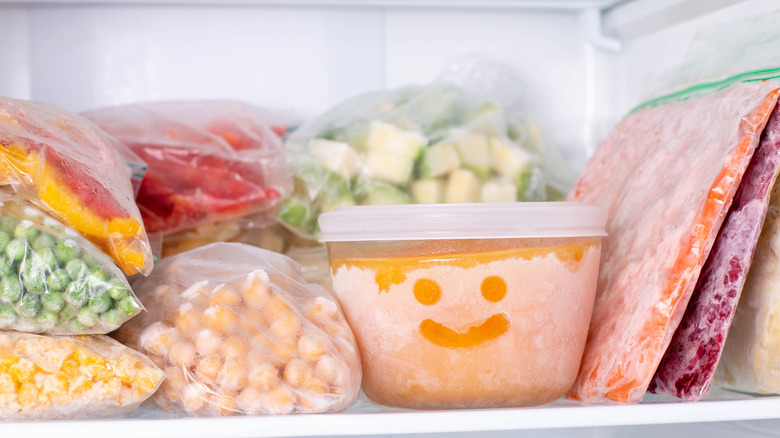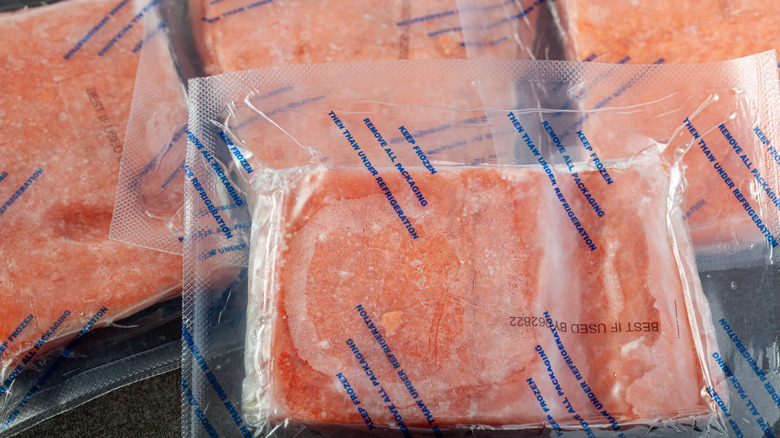Why You Should Never Use Warm Water To Thaw Food
It's been a long day, and you just got home from work. You're hungry and excited to get dinner on the table so you can finally sit down and relax. Then, you remember: You forgot to take it out of the freezer! Now what? There's not enough time to let it thaw on the counter, and your chance to set it out overnight passed long ago. At this point, you're left with one option — the warm water method.
Letting your food thaw in warm water seems like the most logical choice: It's quick, easy, and won't come out uneven like it would if you defrosted it in the microwave. However, using warm water to thaw your food is a risky business that could have severe repercussions for your stomach (via USDA). But that doesn't mean you're out of luck. On those busy days, when a million things besides thawing your food are on your mind, there's a safe way to use water to get it done quickly.
The danger zone
According to the USDA, nothing perishable should ever be thawed in hot water. Why? Because it's at risk of entering the danger zone. What's the danger zone? The temperature range where bacteria grows: between 40 degrees Fahrenheit and 140 degrees Fahrenheit. It might seem obvious why consuming bacteria is best avoided but, to spare you the details, it can cause food poisoning (via USDA).
It's estimated by the CDC that each year, 48 million people get sick from eating foodborne pathogens. Of these people, 128,000 people are hospitalized, and as many as 3,000 die. This is why it's so important that you avoid mistakes when thawing frozen food.
So, instead of using warm water to thaw your food in a pinch, the USDA says the safest way is to put your food inside of a leakproof, plastic bag and submerge it under cold water. Then, every 30 minutes or so, add cold water to keep the temperature down and out of the danger zone while it continues to thaw. If you're thawing a small amount of food (anything a pound or less) the process shouldn't take more than an hour.

